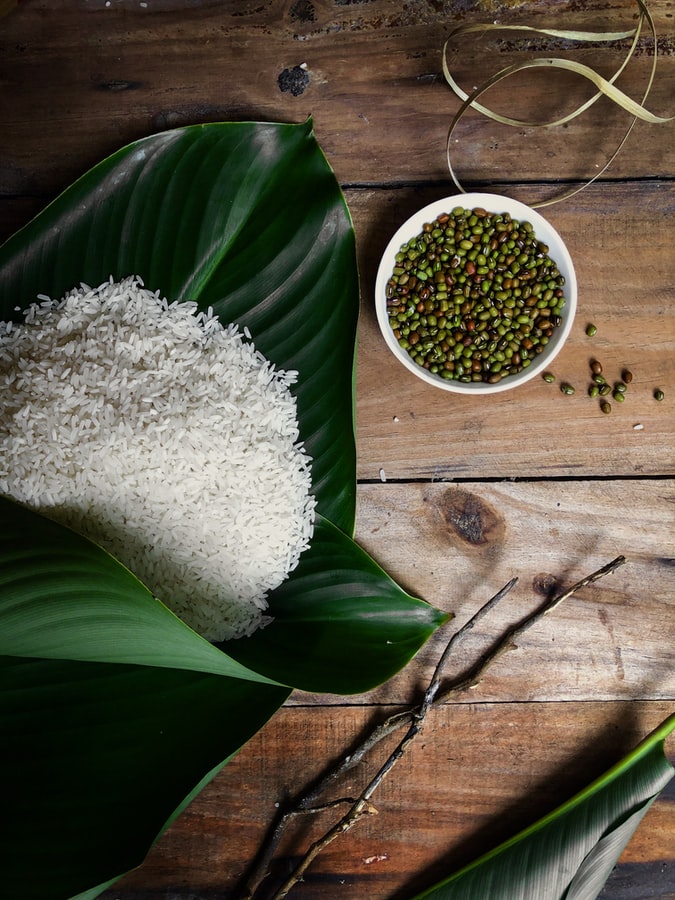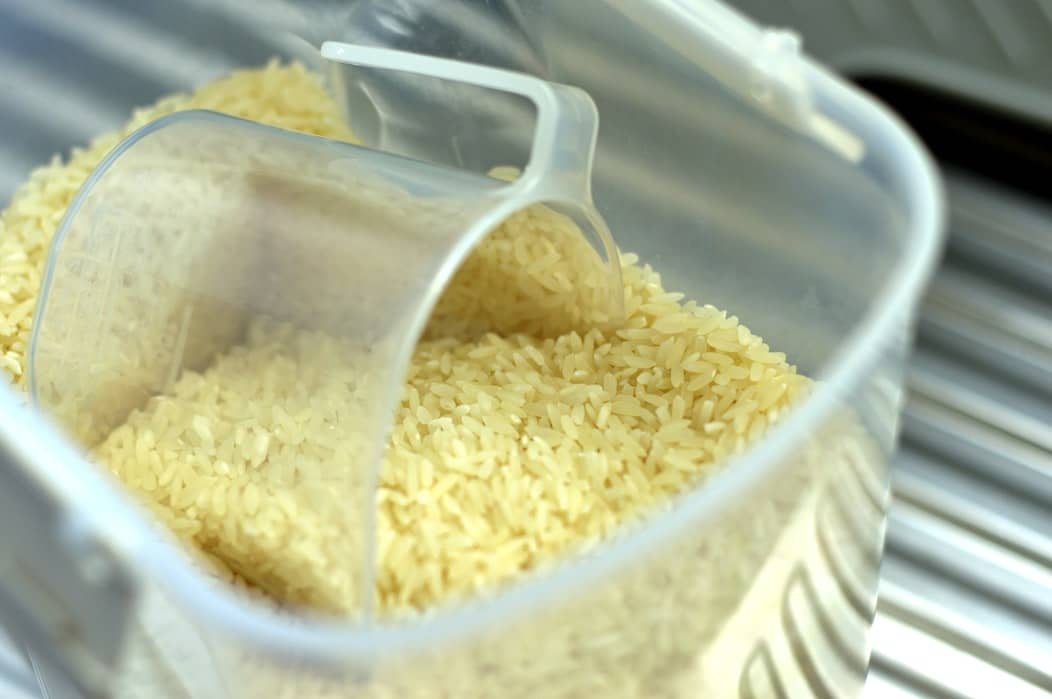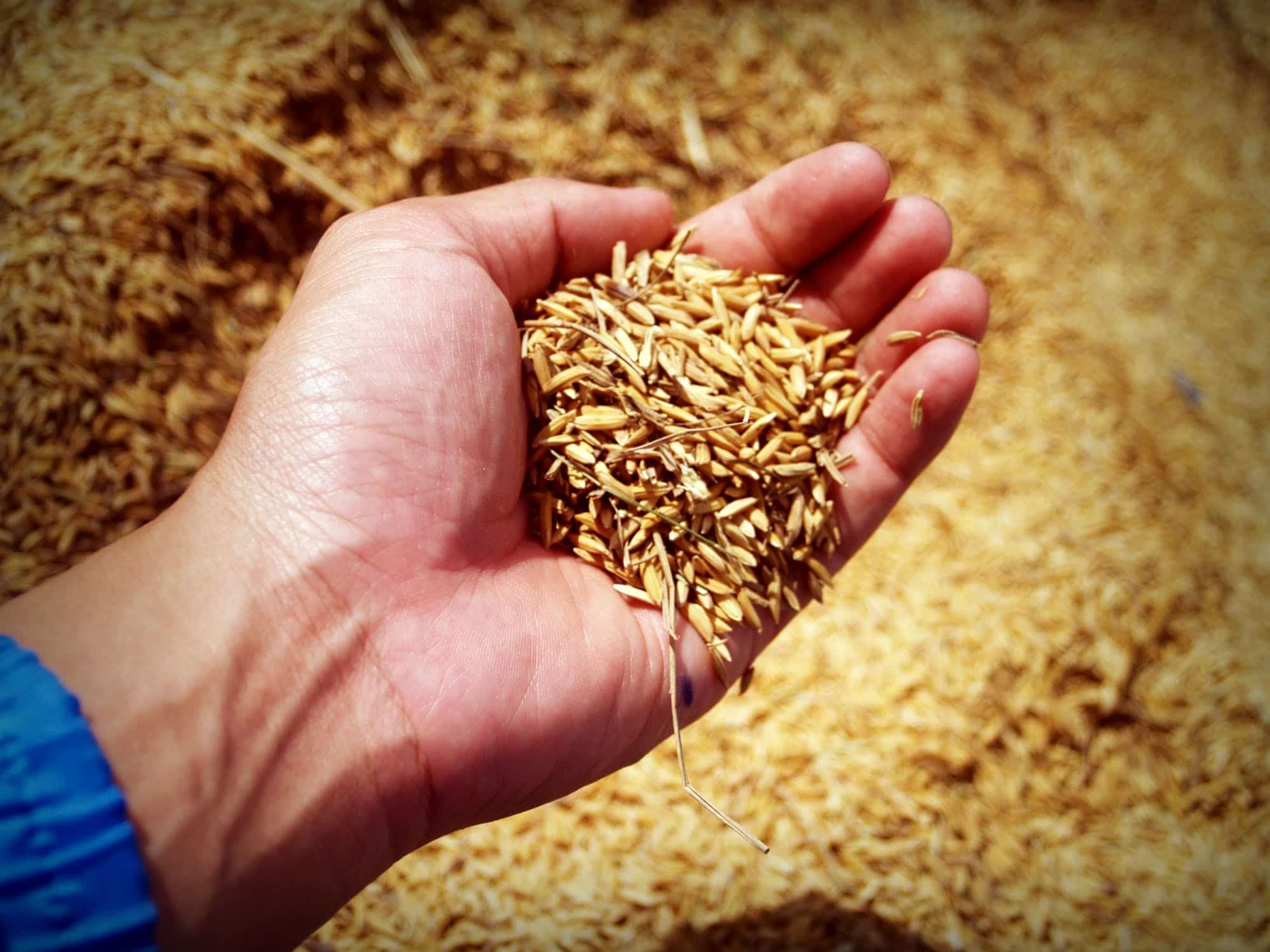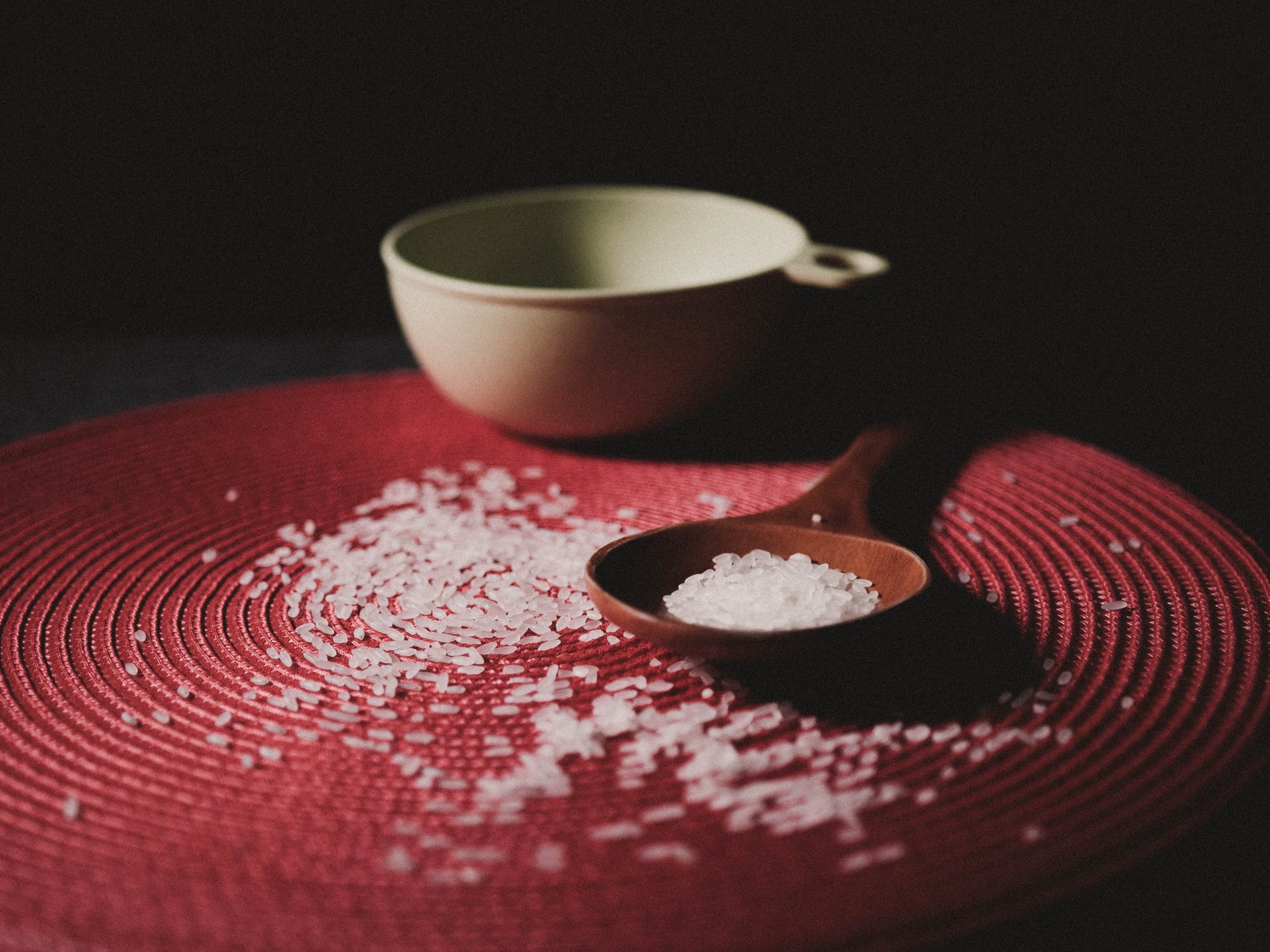Whenever we need to keep some foodstuff longer and make sure it will still be safe and tasty, the optimal way to do so is to place the goodie into the frosting camera. However, when it comes to uncooked rice, people often get confused. Can you freeze raw rice? Maybe, frost will damage it and make it unedible?
In this article, we will explain all the nuances of rice storage and offer a handy and easy method of stocking raw rice long-term.
Can You Freeze Uncooked Rice?
Shortly speaking, yes, raw rice can be successfully and surprisingly easily exposed to frost for long-term storage. However, it is important to keep in mind that this sort of cereal needs certain conditions to provide it with in order to make the grains last longer and avoid decay.
In case we need to stock raw rice longer than usual, we must consider that the foodstuff will need proper storage conditions first.
The crucial aspect we need to pay attention to is the temperature of the area where the cereal is kept. The optimal recommended temperature for the uncooked rice to store is 40 F (equal to 4 C) or lower.
However, if this rate can’t be achieved, the foodstuff can be kept at 21 C or 70 F, but in this case, we will have to make use of oxygen absorbers, otherwise, the rice will soon deteriorate.
This is actually why a frosting camera is a universal way of how to store rice safely and under the correct conditions. Moreover, freezing uncooked rice has several other advantages:
- Exposing this cereal to frost will ensure that rice will remain bugs-free
- When leaving rice in a freezer, we don’t have to bother about maintaining the proper temperature of the surrounding where the cereal is kept
- Freezing will also save the cereal from dust

Of course, sooner or later somebody may wonder: can cooked rice be frozen? Well, freezing cooked rice is also possible, besides, it is a handy way to preserve the leftover foodstuff for later consumption since we will not have to waste time washing and preparing it.
How to Freeze Uncooked Rice?
When it comes to freezing foods, most of us begin to worry since we all know how fussy and bothersome it can be to get the goodies ready for the frosting camera. Sometimes, certain foodstuffs need to be blanched prior to freezing, and in other cases, we have to take additional care of the foods that come with the sauce to avoid turning them into icy bricks.
Fortunately, freezing rice is a way less complicated procedure. Moreover, it is simple for both uncooked and cooked cereal.
- If you have an unopened box of raw rice, just place it into a frost-resistant packet and toss it into the frosting camera. Yes, that simple!
- However, if the box is opened and some rice was already used, the scheme will be slightly different:
- Find a clean and dry hermetic tank or frost-friendly packet that can be tightly sealed.
- Pour the rice you want to preserve into that container and make sure the lid is closed tightly. If using a packet, press out as much air as you can before sealing it.
- Remember to label the tank with the date when its content was frozen. Doing so is especially important if you are preserving brown rice since its lifespan is way shorter compared to the one of its white counterpart!
- Keep the packets with rice horizontal in a frosting camera to let the content freeze thoroughly.
As you can see, nothing complicated at all, but thanks to these simple actions you will be able to extend the shelf life of the cereal and stock it much longer compared to keeping it in a pantry.
How to Defrost Frozen Uncooked Rice
If you did everything right on the first stage, you now have frozen rice in your freezer. But then there comes the next challenge. How to defrost it correctly?
When we think of thawing, we mostly imagine heating up the frosted foodstuff in the oven or microwave or immersing it in a bowl of water to let the icy layer melt. Anyway, our imagination shows us pictures of hours wasted on that procedure!
Is it the same for rice then, somebody may wander? Fortunately, it is not! Rice is not only extremely simple to freeze, but this cereal is also super easy and effortless to defrost.
Actually, if you are in a hurry to make some food for dinner, there is even no need to thaw the cereal. Just add it to the dish that is going to be cooked according to the recipe instructions, and let the rice fry or boil depending on what kind of food you are making.
However, if you have enough time, we would recommend letting the frozen rice to sit out for a while on the counter to get warmer and thaw a bit.
Uncooked Rice Lifespan
Rice belongs to cereal which means it has relatively the same terms of storage as the other members of this family. But even if you are experienced in rice storing, it will be still useful to refresh this information since different sorts of rice, as you probably know, have slightly distinct requirements regarding their storage.
The general recommendations, however, are the same for all rice types:
- Keep the cereal away from any sources of humidity
- Too much lighting is also not good for this foodstuff
- Make sure your rice is protected from pests

And remember that brown rice will still last shorter no matter what you do since its lifespan is initially way less extended compared to the white sort of cereal.
As for the duration of storage, we suggest everyone check out the simple comparative chart below to see the differences:
[table id=90 /]
How Long Does Cooked Rice Last?
Since raw rice has a surprisingly long lifespan if stored correctly, somebody might wonder whether its cooked alternative is the same durable. Unfortunately, cooked cereal can’t show the same astonishing results in terms of lifespan.
How long does rice last in the fridge? Cooked rice will remain edible for nearly seven days when refrigerated taking into account that it was sealed properly and you didn’t chill it when it was still warm.
On the other hand, cooked brown rice will have a shorter duration term so keep in mind that it may start degrading after three to four days of storing!
How long can rice sit out after being cooked? This is another question that bothers everyone since it is important to not keep the foodstuff unchilled too long, otherwise, the spoilage process will begin sooner and develop faster.
We recommend letting the freshly cooked rice cool down completely prior to refrigerating it, otherwise, the moisture will collect and cause bacteria to grow faster.
Fortunately, we know several handy tips about how to store cooked rice:
- Always stuff it into the hermetic tank or a resealable packet.
- Let the rice cool completely before refrigerating it.
- Never reheat the whole batch. Take only the amount that will be consumed right now.
Like this, cooked foodstuff will be able to remain fresh and edible to its longest without much effort.
Does Rice Go Bad?
-

photo by icon0.com with Pexels
Can rice go bad? People tend to think that this sort of cereal is almost eternal since raw rice can last for decades. However, we need to warn you that such an extended lifespan is only possible if the foodstuff is kept under the correct conditions!
It basically does not matter where the raw rice is kept, what does matter is the conditions under which it is stored.
- The rule of thumb regarding the rice lifespan is that the cereal must stay cool and dry. Even the slightest humidity will cause mold to grow and spread turning the cereal into useless stuff.
- Also, provide rice with a shaded place with minimal oxygen.
- And of course, remember to protect it from rodents and bugs.
Does uncooked rice go bad? Unfortunately, it does if some of the storage requirements were not followed correctly.
To tell that the raw rice turned bad or spoiled is pretty easy:
- You will notice the signs of mold if the foodstuff is badly spoiled.
- The presence of bugs in a rice box is another sign that things went wrong.
- If the cereal changed the color somehow, it also shows that the rice is spoiled.
Never try to cook and eat such a foodstuff! Discard the spoiled cereal and better go buy another packet of fresh rice.
What Is the Best Way to Store Rice Long-Term

Since rice is a sort of cereal, it is also prone to be contaminated with bugs. Even if the foodstuff was bought already packed in a supermarket, there is still a chance that pests managed to get inside somehow.
Since bugs and other cereal pests make the foodstuff spoil way faster, it makes sense to ensure the raw rice is well protected from them to be able to keep it long-term:
- After purchasing rice, put the packet into the frosting camera for a week. The frost will kill the bugs’ eggs if there are any without harming the cereal. After that, feel free to stock the rice as you usually do.
- Always opt for the ziplock storage bags or ziplock containers that are hermetic.
- Put a couple of bay leaves into the tank with raw rice to scare off the pests.
- Leave dry chili peppers on the shelves where the rice is kept to prevent the bugs contamination.
- Keep your pantry clean.
It sounds very simple but if all these steps are taken, the chances that raw rice will last longer and remain safe and edible will grow significantly.
How to Store Bulk Rice
Many people tend to stock rice in a bulk, and in fact, it does make sense. Rice is a staple on many tables around the world because this foodstuff is affordable and cheap, and also rice is very nutritious and high in carbs. In addition, this sort of cereal pairs well with lots of other goodies which makes rice a true emergency product!
This is why, if you want to stock it in a bulk, we would recommend considering several handy and well-working ways of how to do so:
Try out Mylar ziplock storage containers
Divide the rice into portions and pour it into those foil pouches leaving several inches from the top of the packet.
Place a pack of oxygen absorbers into each Mylar pouch to protect the rice from molding.
Seal the pouches using a special heat sealer or, if you don’t have one, an ordinary iron will also do. Remember to press the most of the air out of the pouch before sealing it completely!
Place the pouches in the food-safe tanks and stock them in a dry and cool spot.
Freeze it
Except for Mylar pouches, one more method of storing bulk rice exists. All we need to do is to divide rice into smaller amounts and freeze them. For this purpose, frost-resistant resealable packets will work best of all.
Keep them flat to let the content freeze properly and throughout, besides, such an arrangement will allow saving some space in a frosting camera.
However, if you go for the firm tanks meant for freezing, it’s also fine.
So, now you are informed about everything one needs to know regarding the storage of uncooked rice. Being aware of how to stock it correctly, how to spot the first signs of spoilage, and what to do to keep this foodstuff last longer, we are sure you’ll manage to preserve the rice for years or even decades easily!
[wp-faq-schema title=”Frequently Asked Questions”]

How do you prepare rice for freezing? Are there any special things I need to do? I never froze it before, so I’d be grateful for any help!
Hi! Well, as far as I know, no special prep is needed. You just toss it into the freezer, and that’s it. Of course, previously you will have to transfer the rice into the hermetic container to prevent spoilage and moisture.
Hi! I’m looking for some help! What is the best way to store uncooked rice? I always fail to keep it fine and it degrades too fast. What can I do wrong?
Hello. Try to freeze it for a week before storing it. Seriously. The cold will kill the pests and their eggs that can be the reason why your rice spoils too quickly.
Why is it dangerous to reheat rice? I recently heard this opinion but I can’t see the point of it. I used to reheat rice many times and it was always fine.
I guess, they meant not to reheat it many times. If you have some cooked rice preserved and you just take a part of it, reheat and eat, that’s fine. But if you warm up the whole batch every time, the rice will spoil.